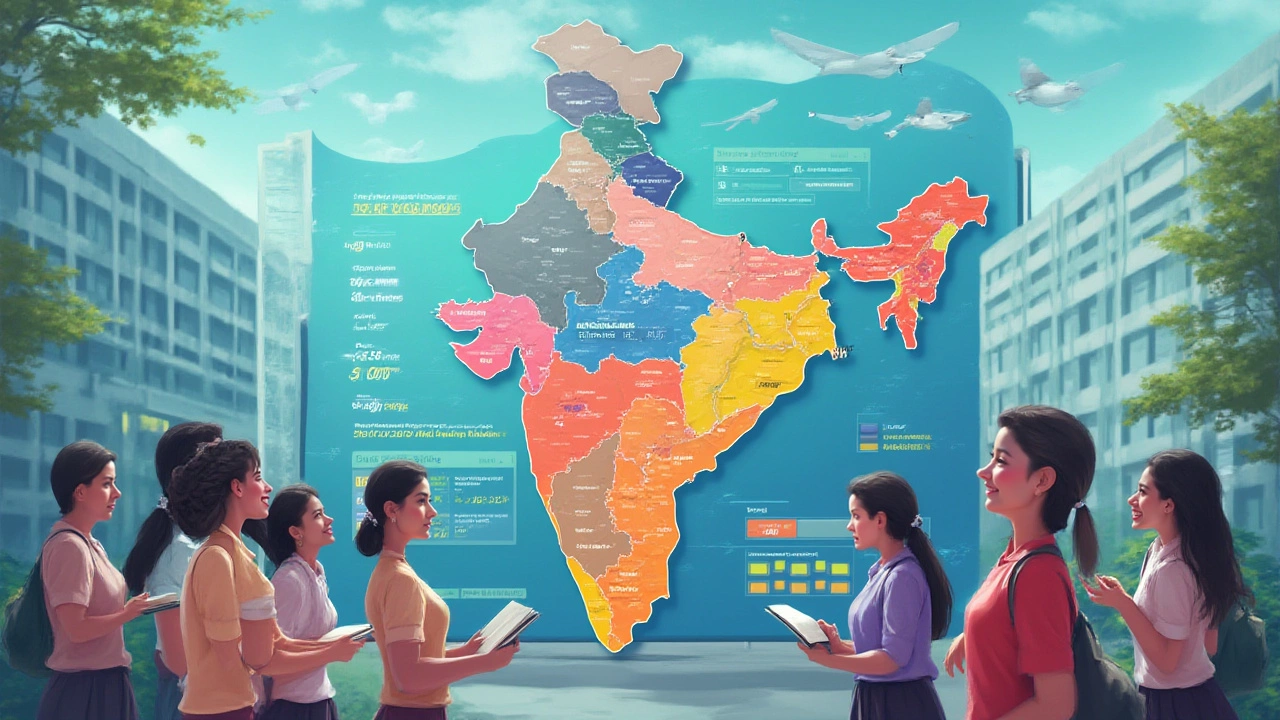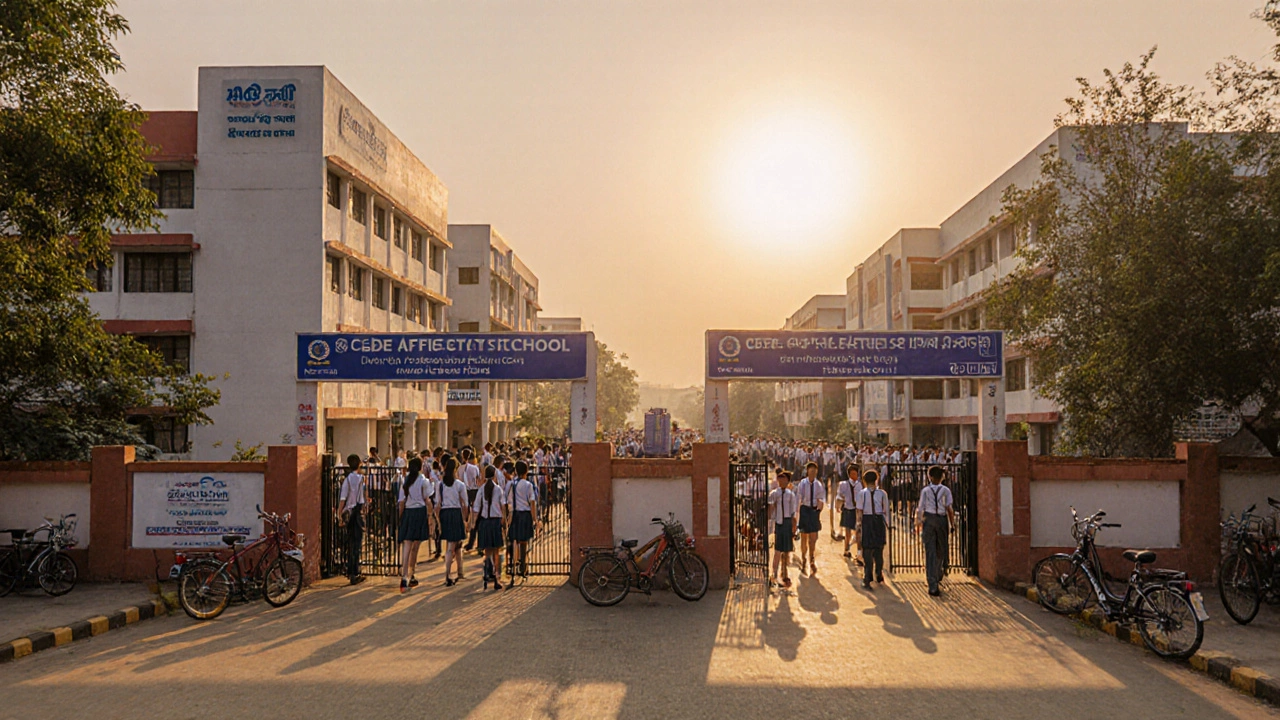Did you know India is home to over 28,500 schools affiliated with the Central Board of Secondary Education (CBSE)? With so many options around, parents and students often wonder – which state actually houses the maximum number of CBSE schools? The answer is not only surprising but also tells a lot about changing education trends in India. Just because a state is biggest in land area, or it’s the most industrialized, doesn’t always mean it leads in education infrastructure. The numbers have stories to tell, and some of those stories can help you make smarter decisions about your child’s learning path.
States Leading the Pack: The Real Numbers Behind CBSE Schools
Uttar Pradesh dominates the list, boasting more than 4,000 CBSE-affiliated schools as of 2024. That’s a massive chunk—nearly 15% of all CBSE schools nationwide are packed into this single state. Why so many? It comes down to both sheer population (the state has over 240 million people) and growing demand for central educational standards due to the state’s mobility. CBSE schools are preferred here because their curriculum is recognized by top universities nationwide, and their students regularly crack national competitive exams. Cities like Lucknow, Ghaziabad, Noida, and Kanpur have become mini-education hubs full of sprawling campuses and budget options both. And don’t think it’s just the big cities—smaller towns like Meerut or Gorakhpur show up in the top charts every year for school registrations.
After Uttar Pradesh, Delhi catches up fast. Surprised? It’s tiny compared to its neighbors but squeezes in over 2,000 CBSE schools. This density is mind-blowing: in some districts, there’s a CBSE school within every 2 kilometers. That’s partly because Delhi has a massive urban, middle-class population looking for quality education, but also because many top-performing government schools have CBSE affiliation (like the Kendriya Vidyalayas and Delhi Public Schools).
Maharashtra comes next, not lagging far behind, crossing the 1,930 mark in terms of CBSE-affiliated institutions. Mumbai, Pune, Nagpur—all the major metros—have witnessed a shift from regional boards to CBSE, thanks to the latter’s science- and tech-friendly syllabus and focus on nation-wide exams like JEE and NEET.
| State | Number of CBSE Schools (2024) |
|---|---|
| Uttar Pradesh | 4,016 |
| Delhi | 2,043 |
| Maharashtra | 1,937 |
| Karnataka | 1,612 |
| Kerala | 1,247 |
| West Bengal | 997 |
| Tamil Nadu | 836 |
| Rajasthan | 778 |
| Madhya Pradesh | 703 |
| Andhra Pradesh | 664 |
There’s an interesting detail hiding in these numbers—the south Indian states. Karnataka, Kerala, and Tamil Nadu, though not topping the chart, have seen a 20% jump in new affiliations in just the past five years. The real push? Global migration. With so many families relocating abroad, they look for education systems like CBSE that help smooth international transitions. Each of these states has cities with notable CBSE schools, attracting students from far beyond state borders—for example, Bangalore’s tech-centric crowd and Kerala’s focus on STEM have made them top choices among expat families.

Why CBSE? Digging into the Popularity of India’s Favorite Board
It’s not just about numbers—there’s a reason CBSE schools are mushrooming everywhere. The board has built a reputation for a student-friendly syllabus that balances academics and co-curriculars. The curriculum is recognized across India, and it’s designed so that no matter which state you move to, you can pick up right where you left off.
CBSE’s real selling point is its focus on science and math. This directly helps students aiming for India’s toughest entrance exams—think JEE for engineering or NEET for medical studies. In the last session, more than 70% of top JEE rankers were CBSE alumni. That translates into an obvious demand: more parents want their kids in the system that produces exam toppers.
But it’s not just about chasing national-level exams. CBSE schools often invest heavily in extra-curricular activities—from Model United Nations (MUN) events, science olympiads, and sports leagues, to even entrepreneurship fests. The board also pushes soft skills. Communication workshops, open debates, and social science projects get as much attention as regular classes. Mumbai’s CBSE schools, for example, started coding clubs as early as class six, while Kochi schools have mandatory environmental awareness campaigns.
Another big factor is the language of instruction. CBSE schools provide education mostly in English or Hindi, with clear policies and good training for teachers. This opens doors for students who want to study at universities both within and outside India, widening their global shot!
In terms of government support, Delhi has pioneered model CBSE schools (like Rajkiya Pratibha Vikas Vidyalayas) that deliver top notch results for minimal fees. This public-private blending means Delhi’s schools aren’t just a luxury for the elite. Even mid-income families can get their children into high-performing institutions, unlike some other boards that are limited to wealthier families.
One tip: if you’re picking a CBSE school, look at more than just the banner. Ask about the school’s actual board exam results, check what value-add programs they offer, and peek into their alumni network. Some of the oldest schools—like St. Francis’ College in Lucknow or Delhi Public School, R K Puram—have produced national leaders, engineers, and artists. These ‘soft factors’ are just as crucial as the sheer numbers.

Trends and Future Insights: What’s Next for CBSE Schools in India?
CBSE is not a static system—its network is expanding and constantly resetting itself to match new education needs. Over the past ten years, states in the north and west saw the most registrations. Now, however, the biggest growth spike is happening in the northeast and smaller urban pockets.CBSE schools in Assam, Tripura, and even rural Gujarat have doubled their numbers since 2020. This was partly triggered by the pandemic, where parents realized that a national board gave kids more flexibility for online classes and transfers.
Here's something interesting: even international schools in India are seeking dual affiliations—running IB or IGCSE streams alongside CBSE. This way, students get the best of both worlds. For example, schools in Hyderabad and Bangalore let you switch from CBSE at Grade 8 to IB for your higher secondaries if you want global exposure.
By 2025, experts predict at least a 12% year-on-year increase in CBSE school registrations from tier-2 and tier-3 towns. Why? Digital classrooms and blended learning have made it easier for schools to connect with Delhi’s central board, regardless of location. You could be in a small city in Bihar or a growing satellite town near Pune and still get access to talented faculty, guest lectures, and online subject support.
One major trend changing the picture is the rise of “concept schools.” These focus on innovation—think robotics labs, maker spaces, or entrepreneurship bootcamps. States like Karnataka are pouring grants into such programs, knowing they’ll attract tech-savvy parents. Meanwhile, Rajasthan and Gujarat are starting to combine CBSE curriculum with their famous coaching cultures, so students get classroom and exam prep in one place.
The admissions game is evolving too. Since CBSE schools are often oversubscribed, many cities have started using lottery systems or point-based criteria for entrance to lower KG and class 1. There’s also a lot more focus on parent feedback—annual surveys, digital dashboards, and open houses help schools improve and get accredited faster by the board.
For families on the move (like those working in defense, government, or multinational jobs), CBSE’s institutional network provides unmatched stability. You can switch cities, and as long as you find a CBSE school, your child’s textbooks and syllabus won’t change much. This is a huge plus that state boards rarely match, especially for students doing grades 10 and 12 when transitions can be stressful.
To wrap it up — if you’re hunting for India’s highest CBSE school density, just look toward Uttar Pradesh and Delhi. But the real race is getting interesting in southern and smaller northeastern states. No one’s standing still; new schools are opening rapidly, and older ones are reinventing how they teach. The numbers give the headlines, but school culture, alumni success, and future-readiness tell the real story for anyone choosing the right place to study.


